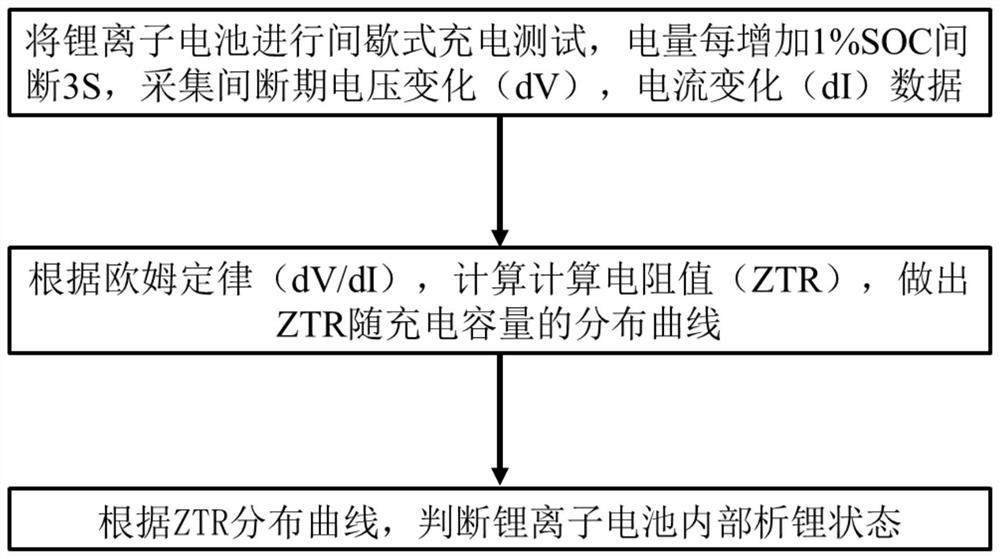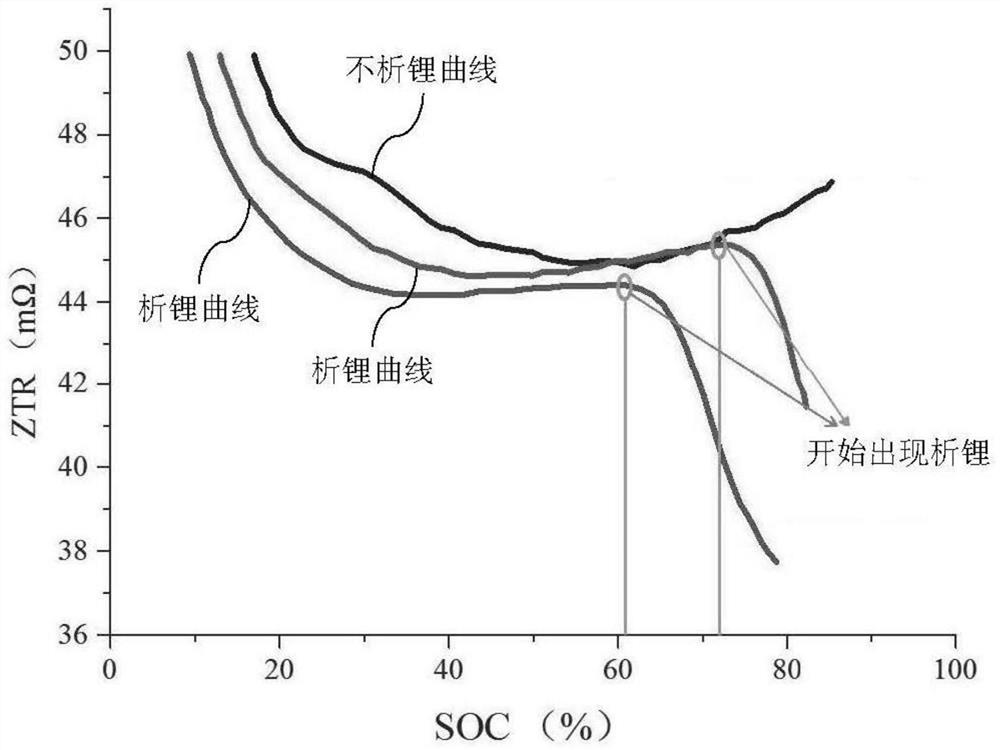Lithium ion battery charging lithium precipitation real-time detection method and system
A lithium-ion battery and detection method technology, applied in the field of lithium-ion batteries, can solve the problems of complex operation and low efficiency of detection and analysis of lithium, and achieve the effects of simple and efficient operation, improved service life and safety performance, and high detection accuracy
- Summary
- Abstract
- Description
- Claims
- Application Information
AI Technical Summary
Problems solved by technology
Method used
Image
Examples
Embodiment 1
[0025] Please refer to the attached figure 1 and 2 , is a schematic flow chart of a lithium ion battery detection method provided in an embodiment of the present invention. This method is suitable for the scene of lithium ion detection at the negative electrode during lithium ion charging. The method specifically includes the following steps:
[0026] Take 8 NCM-18650 2.0Ah batteries, and conduct intermittent charging tests at different rates (0.2C, 0.5C, 1C and 2C) in a low temperature (10°C) environment. When the power increases by 1%, the SOC is disconnected for 3 seconds, and the collection is interrupted. Periodic voltage change (dV), current change (dI), calculate the resistance value (ZTR) through Ohm's law (dU / dI), draw the distribution curve of ZTR with charging capacity, and judge the lithium-ion battery according to the distribution curve of ZTR with charging capacity The internal lithium analysis state, the results are shown in Table 1 below.
Embodiment 1
[0027] Table 1 Example 1 Lithium-ion battery internal lithium analysis state
[0028]
[0029] The technical solution provided by the embodiment of the present invention can accurately detect the lithium ionization of the negative electrode of the lithium-ion battery at low temperature (10° C.) through the processing and analysis of the data, thereby avoiding the detection error caused by human subjectivity, and also avoiding the Lithium separation at the negative electrode affects the safety of the battery, improves the service life and safety performance of the lithium-ion battery, is easy and efficient to operate, and has high detection accuracy.
Embodiment 2
[0031] Take 8 NCM-18650 2.0Ah batteries, and conduct intermittent charging tests at different rates (0.2C, 0.5C, 1C and 2C) at room temperature (25°C). Every time the power increases by 1%, the SOC is disconnected for 3 seconds, and the collection is interrupted. Periodic voltage change (dV), current change (dI), calculate the resistance value (ZTR) through Ohm's law (dU / dI), draw the distribution curve of ZTR with charging capacity, and judge the lithium-ion battery according to the distribution curve of ZTR with charging capacity The internal lithium analysis state, the results are shown in Table 2 below.
PUM
 Login to View More
Login to View More Abstract
Description
Claims
Application Information
 Login to View More
Login to View More - R&D
- Intellectual Property
- Life Sciences
- Materials
- Tech Scout
- Unparalleled Data Quality
- Higher Quality Content
- 60% Fewer Hallucinations
Browse by: Latest US Patents, China's latest patents, Technical Efficacy Thesaurus, Application Domain, Technology Topic, Popular Technical Reports.
© 2025 PatSnap. All rights reserved.Legal|Privacy policy|Modern Slavery Act Transparency Statement|Sitemap|About US| Contact US: help@patsnap.com



